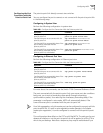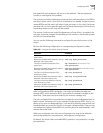
9
AAA AND RADIUS OPERATION
This chapter covers the following topics:
■ IEEE 802.1x
■ Implementing the AAA and RADIUS Protocols
■ Configuring AAA
■ Configuring the RADIUS Protocol
■ Configuring HWTACACS
■ Displaying and Debugging the AAA, RADIUS, and HWTACACS Protocols
■ AAA, RADIUS, and HWTACACS Protocol Configuration Examples
■ Troubleshooting AAA, RADIUS, and HWTACACS Configurations
IEEE 802.1x IEEE 802.1x (referred to as 802.1x) is a port-based network access control protocol
that is used as the standard for LAN user access authentication.
In LANs that comply with IEEE 802 standards, the user can access devices and
share resources in the LAN by connecting a device such as a LAN Switch. In
telecom access, commercial LAN (a typical example is the LAN in the office
building) and mobile office, etc., the LAN providers generally aim to control the
user’s access. The requirement on the above-mentioned “port-based network
access control” is the most applicable.
As the name implies, “port-based network access control” means to authenticate
and control all accessed devices on the port of the device. If the user’s device can
pass authentication, the user can access resources in the LAN.
802.1x defines port based network access control protocol, and the point-to-point
connection between the access device and the access port, only. The port can be
either physical or logical. A typical application environment is as follows: Each
physical port of the LAN Switch only connects to one user workstation (based on
the physical port) and the wireless LAN access environment (based on the logical
port), etc.
Configuring IEEE 802.1x is described in the following sections:
■ 802.1x System Architecture
■ Configuring 802.1x
802.1x System
Architecture
The system using 802.1x is a typical C/S (Client/Server) system architecture. It
contains three entities: Supplicant System, Authenticator System and
Authentication Server System.


















